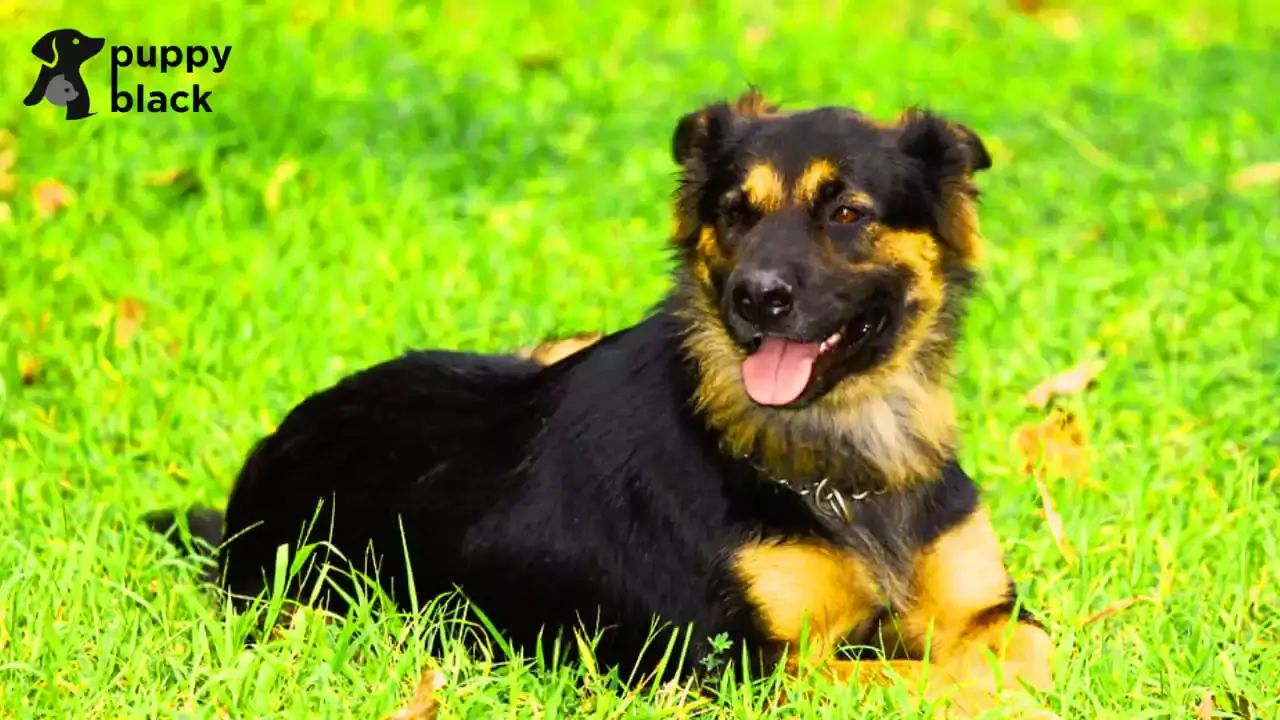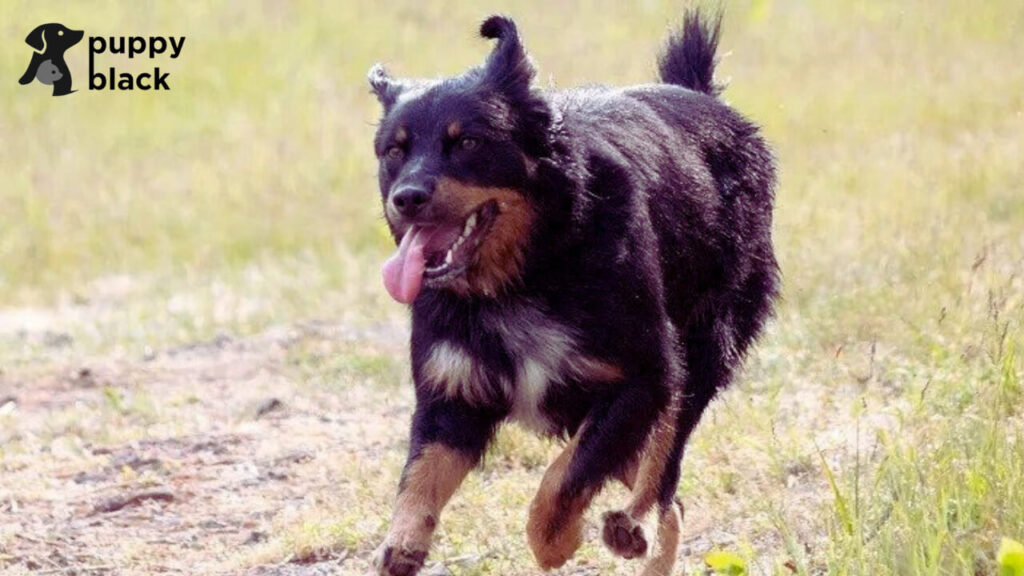Unveiling the German Shepherd Rottweiler Mix: An Introduction
Defining the Mix: Start by defining what a German Shepherd Rottweiler mix is. Mention that it’s a crossbreed between a German Shepherd and a Rottweiler. Introduce any popular nicknames like “Shepweiler” or “Rottweiler Shepherd.”
Origin and History: While the precise origin of the mix might be unknown, provide some historical background on how and why this mix may have come into existence. Discuss the history of crossbreeding dogs and the increasing popularity of mixed breeds.
Purpose of the Mix: Explain the possible reasons behind creating this mix. It could be to combine the intelligence and versatility of the German Shepherd with the strength and courage of the Rottweiler. Also, consider whether this mix was intended for specific work, companionship, or other purposes.
Initial Overview of Characteristics: Give a brief overview of the general physical and temperamental characteristics that can be expected from this mix. However, save the detailed descriptions for later sections.
Popularity and Recognition: Discuss how popular this mixed breed is and whether it is recognized by any major canine organizations. You might also want to touch on the current trend and demand for designer dogs and how this mix fits into that trend.
Setting Expectations: Prepare the reader for what to expect in the rest of the article. Mention that you’ll cover various aspects like physical characteristics, temperament, health, and care.
Visual Element: If possible, include a high-quality image of a German Shepherd Rottweiler mix to give readers a visual idea of the breed. Make sure to use royalty-free images or ones you have permission to use.
Introduction to Parent Breeds: Conclude the section with a teaser about the next part of the article, which would delve into the parent breeds – their characteristics, and how they contribute to the mix.
Genetic Blend: Understanding the Parent Breeds
You’ll delve into the genetic makeup of the German Shepherd Rottweiler mix by exploring the characteristics of the two parent breeds. This will provide a foundation for understanding the traits that might be present in the mix. Here’s how you can structure this section:
Introduction to German Shepherds:
- Briefly discuss the history and origins of the German Shepherd breed.
- Highlight their key characteristics, such as intelligence, loyalty, and versatility.
- Mention common roles German Shepherds are known for, like police work, service dogs, and family pets.
Introduction to Rottweilers:
- Provide a background on the Rottweiler breed, including their origins and history.
- Describe their primary traits, like strength, protectiveness, and calm demeanor.
- Discuss the typical roles Rottweilers are found in, such as guard dogs, search and rescue, and as companions.
Physical Traits of Both Breeds:
- Compare and contrast the physical attributes of German Shepherds and Rottweilers, including size, coat type, and general appearance.
- Explain how these physical traits could potentially blend in their offspring.
Temperament and Behavior:
- Discuss the temperament of each breed, focusing on aspects like trainability, socialization needs, and typical behavior patterns.
- Provide insights into how the temperaments of these breeds might influence the personality of their mix.
Health and Lifespan:
- Talk about the common health issues associated with each breed and their typical lifespan.
- Mention any known hereditary conditions that could be important for potential owners of the mix to be aware of.
The Genetic Lottery of Mixed Breeds:
- Explain the concept of genetic variation in mixed breeds, emphasizing that traits from either breed can be present in any combination in their offspring.
- Discuss the unpredictability and diversity of mixed breed puppies even within the same litter.
Why Mix These Breeds?:
- Explore the reasons behind deliberately mixing German Shepherds and Rottweilers, such as combining certain desirable traits from both breeds.
- Mention any potential benefits or drawbacks of this specific mix.
Visual Aids:
Include images or charts showing the typical characteristics of German Shepherds and Rottweilers. Ensure these images are either your own, royalty-free, or properly credited.
Physical Characteristics and Growth Patterns
You’ll focus on the physical aspects of German Shepherd Rottweiler mix puppies, discussing their appearance, growth, and how these elements might vary. Here’s how you can structure it:
Initial Description of the Mix: Start by painting a picture of what a German Shepherd Rottweiler mix typically looks like. Include details such as coat color, texture, and general body structure. Since this is a mix, emphasize the range of possible appearances due to the genetic diversity.
Size and Stature: Discuss the expected size range for these puppies as they grow. German Shepherds and Rottweilers are both large breeds, so their mix is likely to be large as well. Provide estimates of adult weight and height, but remind readers that these can vary.
Coat Characteristics: Describe the coat of the German Shepherd Rottweiler mix. This could include common colors, patterns, and whether the coat is more likely to be short like a Rottweiler’s or longer like some German Shepherds’. Also, touch on any grooming needs specific to their coat type.
Facial Features and Build: Talk about the facial characteristics (like the shape of the head and eyes) and the build of these dogs. Since both parent breeds have distinctive looks, the mix might have features from either or a combination of both.
Growth Milestones: Provide a rough timeline of their growth stages. When do they reach full height? How long until they are considered fully mature? This information can be crucial for owners in terms of training and nutrition.
Physical Variability: Emphasize that, due to the nature of mixed breeds, the physical traits of German Shepherd Rottweiler mix puppies can vary widely even within the same litter. Explain how genetics play a role in this variability.
Comparative Analysis: If possible, compare the physical traits of this mix to those of the purebred parent breeds. This can help readers understand what traits are dominant and how they manifest in the mixed breed.
Photographic Examples: Include photos showing a variety of German Shepherd Rottweiler mix puppies. This visual representation will help readers get a better idea of the diversity within the breed. Remember to use images that are either your own, royalty-free, or properly credited.

